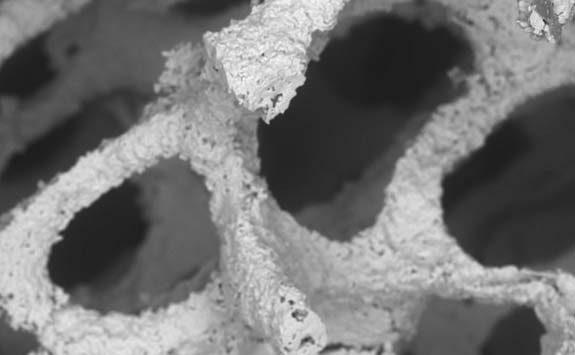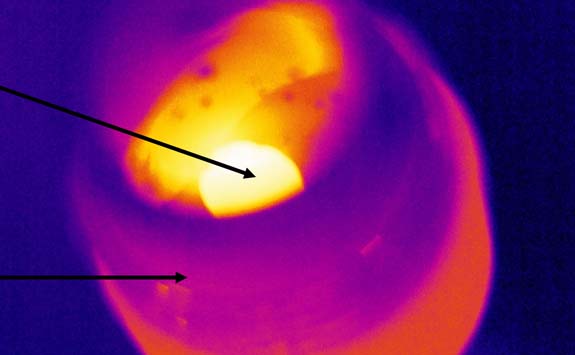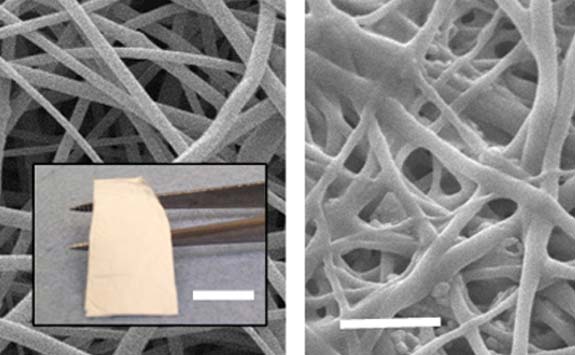Biomaterials
New materials for healthcare applications
Biomaterials for Tissue Engineering
Across the group we have expertise in the development of new polymers, glass ceramics, and composite materials for tissue engineering applications. Glass ceramics and polymer-ceramic biocomposites are of particular interest for bone tissue engineering. For softer tissues polymer hydrogels offer a biomimetic system for the growth of cells into tissue. Current projects involve research into tissue engineering for bone, cartilage and skin, and the creation of 3D tissue models to study osteoarthritis and cancer.

Biomaterials for cancer therapy
We are researching how novel magnetic glass-ceramics can be used in the treatment of bone cancers using magnetic induction hyperthermia. This uses a magnetic field to heat up magnetic glass-ceramic materials which are inside the body, with the local heat killing cancer cells.

Bioactive Coatings
Layer-by-layer electrostatic assembly is an inexpensive and environment friendly technique which can develop multilayered bioactive nanocoatings on medical devices. The process works through repeated sequential exposure of a charged substrate to positively and negatively charged polymer solutions. Our research has shown that layer-by-layer deposition can stimulate faster bone regeneration, and we are also exploring the use of Manuka honey with layer-by-layer assembly to give coatings antibacterial properties.

Additive manufacturing, bioprinting and biofabrication
We're working on the development of different biomaterials, including synthetic and natural polymers and material blends and composites, to mimic the composition of human tissues.
These new materials are used as feedstock for top-end technologies such as:
- extrusion bioprinting
- electrospinning
- fused filament fabrication
They create bespoke devices for tissue regeneration including:
- bone
- liver
- cartilage
- cardiac
- neural
The same techniques are also exploited for the design and validation of in vitro models of both healthy and diseased tissues. They are often combined with microfluidics for both modelling and diagnostics.